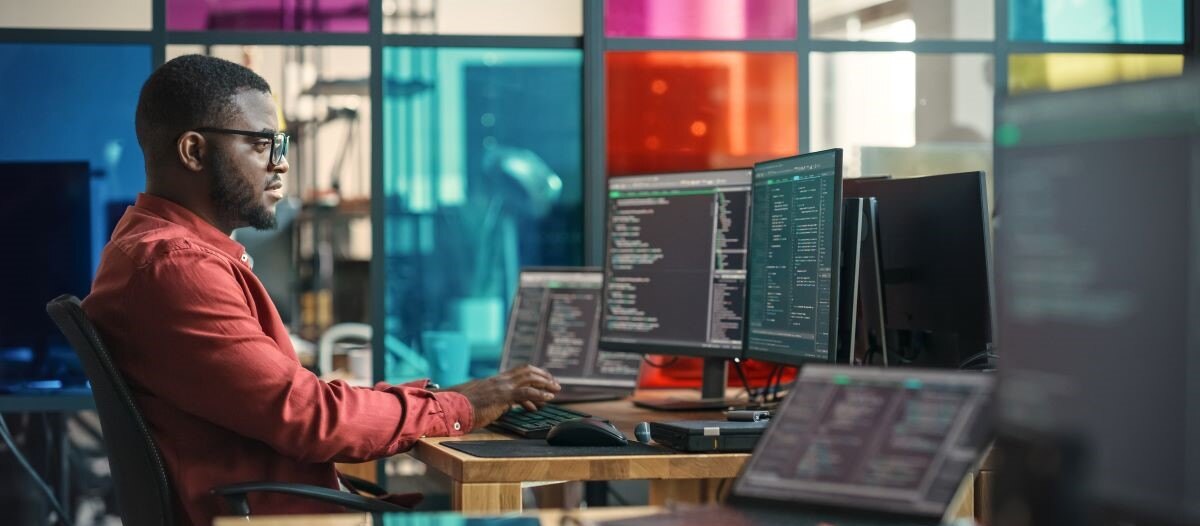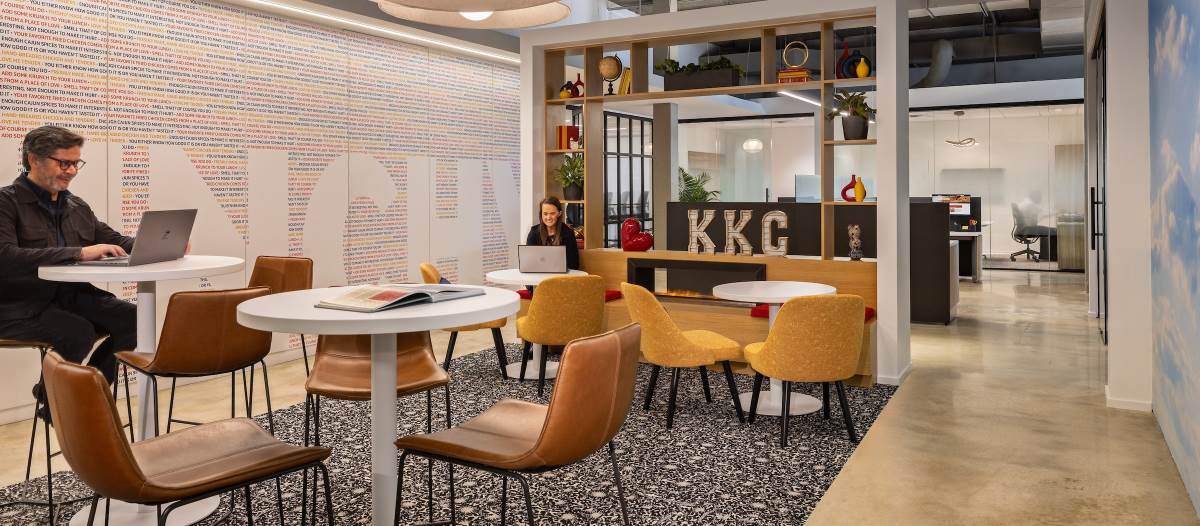Making Work Work
Supporting work models & cost-effective, sustainable building portfolios

Virtual and remote work is now, and perhaps permanently, an essential part of how businesses operate. From a facility management perspective, a hybrid work model is perhaps the most complex work model to implement. While such a model allows employees to have a major say in selecting where they work, there are considerations that need to be considered:
- Variations in what mix and how much work can be completed remotely versus at the office;
- Decisions to be made whether some work can be best done at rented co-shared workspaces;
- Investments in technology platforms and tools to ensure that employees can continue to do their jobs effectively;
- Changes to organizational structures, supervision practices and business processes to best maintain a company’s cultural development and effective operations.
It is vital that organizations articulate and resolve these considerations. A guiding principle should be: “when an office presence is required, the office needs to be worth the commute.” As an example, Accenture reported in its 2022 Future of Work study that being omni-connected (i.e., “feeling connected, of being included, and knowing we belong, regardless of our physical location”) accounts for 59 percent of employees’ intentions to remain with their company.
Along with a hybrid work model are a move toward virtual and remote work and an urgency to address environmental issues. The greatest contributor to climate change problems are buildings. As reported by the World Resources Institute, buildings consume one-third of all energy and produce one-quarter of greenhouse gases globally. There is a real question as to whether hybrid work models for building portfolios can be both cost effective and sustainable.
In the U.S., the federal government is aggressively recognizing and addressing environmental problems related to the built environment. The Inflation Reduction Act of 2022 (IRA) is the most significant climate legislation in U.S. history, offering funding, programs and other incentives to accelerate the transition to a clean energy economy. Facility managers have a significant role in managing the above issues' impact on the buildings they operate and manage. And to help them address the challenges and take advantage of opportunities, leveraging technology is vital.
Technology tools to support hybrid work models
Before considering whether a post-COVID-19 organization and its impact on work (e.g., the increase in remote working and the permanent underutilization of existing commercial buildings), it is important that the platforms and technology tools are in place to support hybrid work models. Such capabilities include:
- Cloud-based productivity, messaging and collaboration tools such as Slack or Microsoft Teams, which can be used to share and co-author documents, communicate with team members and enhance project organization;
- Video conferencing tools such as Zoom, WebEx or Google Meet, which can be used to conduct virtual meetings, allowing remote employees to participate in real-time discussions and presentations;
- File-sharing tools such as Google Drive or OneDrive, which can be used to store, share and collaborate on documents and files;
- Online project management tools such as Trello and Asana, which have made it possible and practical for individuals and teams to work on team projects from anywhere;
- Virtual whiteboard tools such as Miro or Google Jamboard can be used to brainstorm, collaborate and create visual content.
Technology that assists employees operating remotely also increases the risk of cybersecurity threats – thus the importance of ensuring that appropriate technology security measures are in place. It is vital to implement “zero trust” cybersecurity principles and a framework that includes:
- Use of secure VPNs to encrypt communication between remote workers and the office network, keeping data secure while in transit;
- Two-factor authentication to add an extra layer of security to user accounts;
- Ensuring that all sensitive data is encrypted;
- Installing up-to-date anti-virus and anti-malware software to ensure endpoint security on remote devices;
- Implementing remote device management policies and technologies to manage and secure remote workers' devices, ensuring that they are up to date with the latest security patches and software updates.
Managing remote working
FMs should initially perform the following planning functions:
- Analyze current and future requirements for the building portfolio. Consider the impact of existing and potential changes to the company’s hybrid work strategy;
- Develop a plan, with the company’s strategic and financial plan constraints in mind, that transitions the building portfolio to:
- Incorporate adaptable, employee-centered workplaces that have, as a central objective, connectivity for everyone;
- Adapt FM operations to minimize carbon emissions and, at the same time, lower overall operating costs;
- Rethink technology assumptions to consider the most appropriate technologies to support the changing organizational structure – both existing and anticipated.
Looking to the future - The role of AI in future building management strategies
There are AI-based products on the market with algorithms that can be used to improve energy efficiency and lower carbon emissions in buildings including:
- Model predictive control algorithms (MPC): MPC algorithms use data and machine learning techniques to predict energy demand and adjust building systems accordingly while reducing energy consumption and costs;
- Building energy management systems (BEMS): BEMS algorithms optimize heating, ventilation, air conditioning and lighting systems to reduce energy consumption and costs;
- Energy optimization and demand response algorithms: Energy optimization algorithms analyze building data and use mathematical models to identify opportunities for energy savings by reducing energy consumption and costs;
- Machine learning algorithms: As a subset of AI, machine learning algorithms can be used to predict energy demand, detect anomalies in building systems and optimize building operations.
AI functionality can also ensure that the overall software architecture supporting hybrid work is secure from a cybersecurity perspective, including:
- Threat Detection: AI can be trained to analyze data and identify patterns that are consistent with known threats. By using machine learning algorithms, AI can learn to identify suspicious behavior such as unauthorized access that may indicate a security breach;
- Vulnerability Scanning: AI can be used to scan software platforms for vulnerabilities and potential exploits. This can be done through automated testing, which can help identify security holes and prioritize them based on the severity of the potential risk;
- Anomaly Detection: AI can also be used to detect anomalous behavior that may indicate a security risk. By monitoring user behavior and system activity, AI can learn what is typical for the system and flag any activity that deviates from the norm.
- Risk Assessment: AI can help assess the overall security status of the software platform by analyzing various factors, including the software's configuration, network security, access controls and other security-related settings. AI can then provide recommendations to improve security and mitigate identified risks;
- Incident Response: In the event of a security breach, AI can help with incident response by analyzing data to determine the extent of the breach, identifying the source of the breach and providing recommendations for remediation.
Back to the present – Technologies to consider in underutilized buildings
- Building automation systems (BAS): Software providers are beginning to incorporate AI to better control building systems such as heating, ventilation, air conditioning, lighting and security;
- Smart lighting systems: Smart lighting systems can automatically adjust the lighting levels based on occupancy and natural light, thereby reducing energy consumption and costs;
- Computerized maintenance management systems (CMMS) and predictive maintenance: AI algorithms can now be used to analyze building data, such as energy consumption patterns, to predict when maintenance is required, reducing downtime and increasing efficiency;
- Energy management systems. AI can now be used to better analyze energy consumption data in real time and identify areas where energy use can be optimized, reducing costs and improving the building's overall energy efficiency;
- IoT sensors: IoT sensors can collect data on building usage and occupancy, providing building owners with valuable insights into how the building is being used;
- Space management occupancy and usage patterns: AI can be used to analyze occupancy and usage patterns in buildings, helping to optimize space usage and improve overall building spatial efficiency.
Potential role for FM service providers for existing buildings
With more employees working from home, there has been a decrease in demand for traditional FM services. FM service providers have found new ways to deliver their services, invest in technology and focus on sustainability to stay competitive and meet the evolving needs of their clients. For example, service providers have had to invest in remote monitoring and management technologies, such as IoT sensors to manage building systems, track energy consumption, and maintain building health and safety.
These new capabilities can be sourced from FM service partners rather than make the in-house capital investment. In this way, the associated costs can be operational rather than capital investments. This will provide more flexibility for in-house FMs to change their approach as business circumstances change.
Innovative design companies for new buildings
For large renovations and new construction, it is advantageous to engage a design partner with a company that has incorporated AI functionality into its software tools for generative design solutions (i.e., an iterative design process) that will generate spatial outputs that reflect physical constraints and design objectives. In this manner, the designer will be able to fine-tune the results to deliver the best solution possible.
Such tools should analyze and optimize the environmental impact of a project over its design life cycle and optimize energy efficiency. A software tool should be able to use the project’s design model and its geographic location to automatically generate, for example, a range of R-values (i.e., insulating effectiveness) and a recommended building orientation.
Summary
With the challenges presented by new virtual and remote work models, environmental regulations and opportunities, the role of an FM in a company has never been more important or more complex. Designing, building and operating employee-centric work environments that incorporate sustainable buildings and infrastructures have a critical impact on the company’s organizational strategies, employee loyalty and retention. This, in turn, results in how the company is perceived and judged to be a good corporate citizen.
To be most effective in this environment, FMs must incorporate the best software architecture that utilizes the most appropriate technologies, software platforms and software applications. At the same time, the technologies themselves have become more complex, particularly within the context of rapidly changing AI functionality. FMs should investigate these technologies leveraging not only in-house technical resources but potentially outside partners and service companies. The overarching goal of this effort is to achieve a cost-effective, sustainability-friendly building portfolio that can successfully adapt to a company’s evolving hybrid and virtual work strategies.


Read more on Occupancy & Human Factors , Emerging Topics and Workplace
Explore All FMJ Topics









